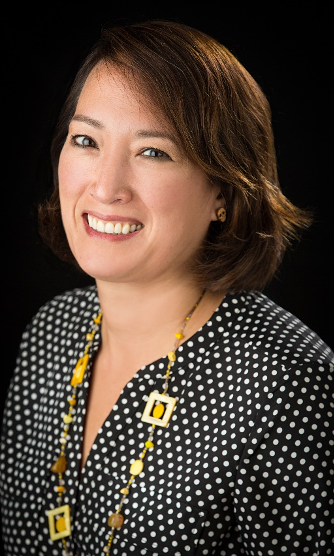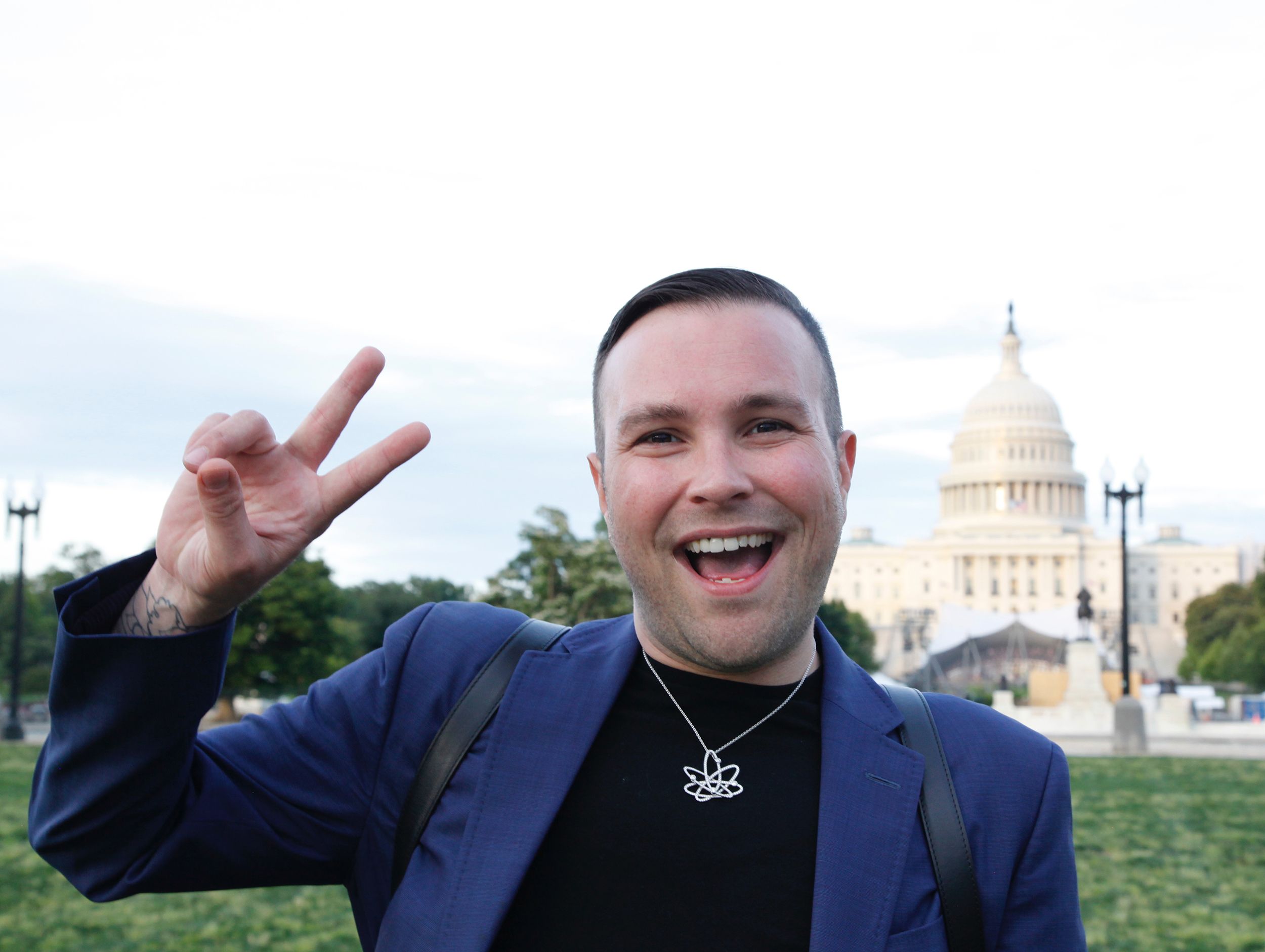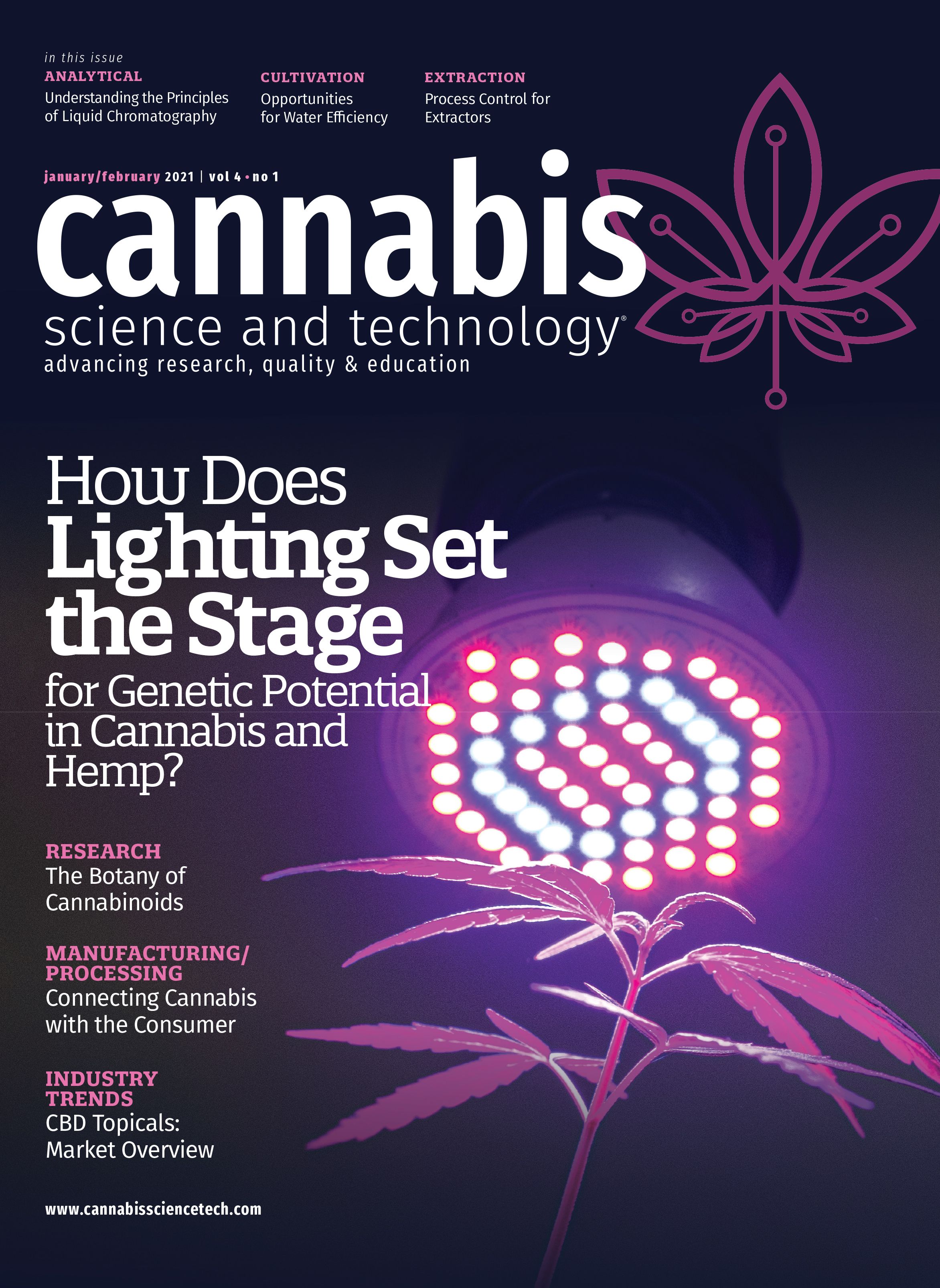Leading with Confidence: An Interview with Dr. Tania Sasaki of Confidence Analytics
Dr. Tania Sasaki shares her insights, experiences, challenges, future directions, and advice.
In this installment of "Cannabis Crossroads", I interviewed a leading cannabis testing laboratory's chief science officer (CSO)—Dr. Tania Sasaki of Confidence Analytics. Here, Dr. Sasaki shares her insights, experiences, challenges, future directions, and advice. Sasaki has more than two decades of analytical science experience applying chromatography and mass spectrometry applications to a wide variety of fields ranging from metabolite identification to clinical testing and she has become a beacon of expertise and information, leading the way for improvements in cannabis testing methods and workflows.
You have extensive experience in analytical chemistry, clinical, and forensics markets, as well as past roles at major analytical instruments manufacturers and healthcare testing laboratories prior to your role as CSO at Confidence Analytics. This seems like an ideal background for a cannabis lab CSO. How is cannabis quality control (QC) testing similar to healthcare lab testing? What are some major differences?
The basic operation and workflows required to run an efficient, high-throughput testing laboratory are very similar. Also, a lot of the testing methods for both cannabis testing and clinical (healthcare) testing are chromatography (gas chromatography [GC] or liquid chromatography [LC]) and mass spectrometry (MS) based.
The biggest difference between the two types of laboratories is that there are federal guidelines and agencies that oversee and regulate clinical testing laboratories. Because marijuana—and previously all cannabis—remains federally scheduled, there are no guidelines from federal agencies, as well as little previous research or literature to consult. Regulations vary considerably among the various states in which cannabis has been legalized. However, because it has been almost 25 years since California legalized medical cannabis (the first state), an increased amount of information is becoming available and common “best practices” are beginning to emerge. Some federal guidelines are starting to form because of the legalization of hemp, which is a type of cannabis, in the 2018 Farm Bill. For example, the National Institute of Standards and Technology (NIST) launched the Cannabis Quality Assurance program last July and Confidence Analytics is participating in the program. Other organizations such as American Society for Testing and Materials (ASTM) and Association of Official Analytical Chemists (AOAC) are also developing hemp testing guidelines and methods.
My focus in clinical laboratories was clinical chemistry (versus hematology, molecular diagnostics, and so forth), and more specifically toxicology. In clinical chemistry, except for a few LC–MS or GC–MS methods, testing is very automated and requires little manual interaction. In the cannabis laboratory, most testing requires some level of manual preparation. Most testing was performed using automated analyzers or LC–MS/MS in the clinical laboratories where I worked. In cannabis laboratories, a larger variety of instrumentation is required to run the complete set of required testing. Many of the tests are chromatography-based, but microbial, water activity, and heavy metals testing are completely different (though it should be noted that many clinical laboratories do perform heavy metal testing using the same technologies that cannabis laboratories use.)
Finally, the wide variety of cannabis products (samples) is different from the samples tested in clinical laboratories. There are only so many human specimen types and many are relatively similar. Although in cannabis testing flower or plant material and concentrates make up the majority of the samples, the textures of concentrates can vary significantly—from an almost solid shatter to a very “gooey” distillate. There are also a wide variety of infused products: oils, topicals, edibles, beverages, and much more. These very different matrices create challenges in testing and take extra effort to ensure that results are valid for each product type.
Can you share with us a little about your undergraduate and post graduate work and how that has helped you in your current role?
My undergraduate degree is in chemistry. My graduate work was in analytical chemistry, with my research being in chromatography–mass spectrometry—so the work I am doing now is directly related to my educational background. Having a solid understanding of chromatographic separations helped with the development of complex separations, such as cannabinoid testing, where there are several similar compounds, including isomers. Understanding mass spectrometry and all the finer details were very useful in optimizing trace level, multicomponent pesticide methods. And, of course, in graduate school I didn’t get brand new instrumentation that was covered by a warranty or service contract! Understanding how to troubleshoot and resolve instrumentation issues to keep instruments running to meet our sample turnaround times is very important. It is very costly to have an instrument down while waiting for repairs.
Can you tell us a little bit more about Confidence Analytics and your mission, goals, and key market differentiators?
The founders of Confidence Analytics (CEO Nicholas Mosely and CTO Bobby Hines) have technical and scientific backgrounds. When Washington State passed I-502—the adult use cannabis initiative—Nick and Bobby recognized the need for quality testing of cannabis and formed Confidence Analytics. In my experience, many laboratories (not just cannabis) are started by business personnel or investors who do not truly understand the science—or the true cost (both time and money)—required to open a quality lab. Nick and Bobby recognize the value of high technical standards and are dedicated to achieving and maintaining them. When I was asked to join the team, I was very impressed with the solid, scientific foundation of the company and the commitment to quality.
Confidence Analytics’ goal or mission is to “provide accurate results and as quickly as possible… We strive to be a leader in customer service and satisfaction, as well as a leader in the industry.” Historically, there has been some stigma around cannabis. By promoting quality science and educating the public, we aim to help legitimize and destigmatize the industry. Cannabis analysis and research is an emerging field and new discoveries frequently occur. We are excited to contribute to advancing the study of cannabis, as well as the industry as a whole.
Where are you currently based and are you expanding operations in 2021?
Confidence Analytics was established in 2014 in Redmond, Washington. Washington was the first state to certify laboratories and require QC testing. We were the second laboratory to receive state certification and the first to submit a completed test report. Those statistics are very exciting for us and make us one of the longest running cannabis laboratories in Washington state.
We are currently in the process of opening a second laboratory in Grover Beach, California, and expect to open early Q2.
Who are some of your key industry partners?
We like to partner with companies who hold the same values regarding quality and integrity. Currently, Washington is one of the few states that do not require pesticide testing for adult-use cannabis. Legislation is in process to require pesticide and heavy metal testing, but actual approval and implementation have been delayed because of COVID-19 and the difficulty to hold hearings and public meetings. We believe pesticide testing is very important for consumer safety and, therefore, we partner with producers and processors who are committed to providing quality products that meet or exceed the pesticide requirements for medical cannabis. These companies use safe cultivation practices and incur the cost of testing each batch or lot of products for pesticides—not because these are required, but because they care about the industry and its consumers. Products that meet the requirements are labeled “Tested with Confidence” so consumers can be assured that the product has met stringent testing requirements. We have a “Tested with Confidence” website (https://www.testedwithconfidence.com/) that lists the companies and brands for easy consumer reference.
Are you looking to expand your testing services menu in 2021 (if so, what types of tests are you adding)?
Heavy metals testing was added in late 2020, which allowed us to perform all compliance tests in-house. We have one of the most comprehensive terpene panels (36 compounds) and are expanding that to >40 compounds in the near future. We continue to research new terpenes and determine if they should be added.
I have heard that Confidence Analytics prides itself in “rare” cannabinoid screening. How many cannabinoids can you currently screen for and which of the more esoteric cannabinoids are customers very interested in?
Many states require testing of only a small number of cannabinoids, typically the “four big ones”—THC, THCA, CBD, and CBDA. We currently test for 14 different cannabinoids, including minor compounds such as CBC and CBT. CBG has gained significant interest recently and it has always been included in our cannabinoid panel. We are adding another six cannabinoids as soon as certified quantitative reference standards are available for all of them and we can complete the validation. We offer this comprehensive cannabinoid panel without any significant cost difference versus our competitors' less comprehensive panels because we believe in quality and value.
What are some of the biggest challenges that you currently face in the cannabis QC testing industry?
One of the biggest challenges is the US Drug Enforcement Agency (DEA) status of cannabis (products) and many cannabinoid compounds. As previously mentioned, the lack of uniform guidelines create challenges for all laboratories, especially those operating in multiple states. Obtaining appropriate standards for easy calibration of our instruments is also difficult because of the DEA status. Manufacturers have recently produced some better DEA-exempt cannabis mixtures, but it continues to be an ongoing hurdle requiring complex workflows for calibrations and controls.
The large dynamic range—that is, concentration range—that are required for some tests can make testing difficult. Cannabinoids are a very good example, as they may be present at <0.1% w/w while others can be >10%—or even close to 100% for some isolates. Also, some residual solvents have an action limit in Washington of 2 ppm while other solvents are allowed at concentrations of 5000 ppm. Developing quality methods while maintaining efficient workflows is definitely challenging!
As previously mentioned, a wide variety of cannabis products exist. Developing and validating methods that will work with most or all of these sample types—as well as the logistics around handling, sampling, and storage—add additional complexity to our work.
How have operations changed or been affected by COVID-19?
Fortunately, cannabis testing laboratories were categorized as “essential businesses” in both Washington and California (as well as many other states). As a result, we were able to maintain day-to-day business and keep our personnel employed. The laboratory was always well-positioned from a technology standpoint to perform a lot of job functions remotely, so the infrastructure for “work from home” was already in place and did not require any major changes. Obviously, though, personnel need to be onsite to receive and prepare samples and load instruments. We had to distance our workstations, stagger shifts and breaks, implement frequent sanitation procedures, and the other “normal” precautions and procedures that companies developed for employee safety.
Has hemp testing been a growing portion of your testing? What are the key tests offered for hemp analysis?
After legalization of hemp, CBD products have become very popular over the past year, as evidenced by the numerous stores that carry a wide variety of products. As a result, it is no surprise that hemp testing has increased the past year. Most of the testing focuses on the cannabinoid profile and it is typically the amount of THC and CBD for labeling purposes. The Minnesota Hemp Farmers and Manufacturers’ Association (MHFMA) sought out Confidence Analytics to perform testing on their local CBD products to compare labels with actual test results (1). Confidence Analytics was also asked by a local Seattle news organization to perform similar testing to check CBD labeling (2). It was a great compliment to our company—and a testimony to our mission statement—that these organizations chose our laboratory to perform these analyses.
As a CSO do you have time for virtual industry conferences? Are you eager to get back to live, in-person tradeshows?
We have been really busy this past year working to open our California laboratory. California’s Bureau of Cannabis Control (BCC) has some very strict requirements and we’ve been navigating the regulations. The pandemic has also delayed progress—both on our end and the BCC’s. I have been fortunate to attend a couple virtual conferences and presentations, but look forward to having more time after duties for the California laboratory settle. And yes! I cannot wait to get back to in-person conferences. I miss the educational and networking aspects. I am relatively new to the cannabis industry and I find in-person conferences one of the best places to absorb a lot of information.
What advice can you share with "Cannabis Crossroads" readers that aspire to one day be a CSO of a high-quality cannabis testing laboratory?
My best advice would be: 1) Be patient! It takes time to develop the skills and learn; 2) Get out of your comfort zone and learn different aspects of a business; 3) Network, find good mentors—and be a mentor.
1) Malcolm Gladwell touted that it takes 10,000 hours of practice or experience to master a skill. While the exact number of hours is up for debate, there is definitely something to be said for gaining experience and perspective. I look back at how much I have learned throughout my career and all the different paths I took to gain that experience—not only in science, but leadership, business, and life. I am constantly evaluating different situations and determining what went well and what I need to do to “fill the gaps” and improve my skill set. It took me 10 years to really climb the ladder to a high-level position. I paid my dues and learned everything I could along the way . . . which leads me to my second point.
2) I was fortunate to be exposed to business aspects outside of the “true scientific” side. Sure, having a solid scientific background is very important, but having a basic understanding of product development, sales and marketing, customer service, and overall business operations allows me to contribute beyond strictly the scientific arena. It also helps me see how the scientific aspects fit into the overall organization and make any improvements. Communication skills—both oral and written—are important, too, as it is often necessary to present complex scientific information to audiences who may not have the technical background. These presentations may be to customers who are trying to understand how we ensure our results are accurate or justifying laboratory purchases to executive leadership who may not always fully understand the technical or scientific aspects and challenges of running a laboratory.
3) Networking is important because developing relationships within—and outside—your industry is very helpful. These relationships help when seeking advice, hiring employees, being informed of new developments, and numerous other ways. I also highly recommend everyone have at least one solid mentor from whom they can get trusted advice. It should be someone who will be direct and honest, even if the feedback is difficult to take. It is through navigating difficult situations and mistakes that I have learned the most (even if it didn’t feel like it at the time)! My mentors have no problem telling me when they think I am wrong or did a mediocre job handling a situation! But they also coach me through the problems and discuss solutions and how to do better next time I am faced with a similar situation. These discussions lead back to point 1: What gaps do I need to fill and how can I improve my skill set?
Thank you Dr. Sasaki for sharing these insights, current challenges, future directions, and excellent advice. Also, thank you for bringing your exceptional chromatography and mass spectrometry experience to cannabis QC testing. I wholeheartedly agree with you that in-person conferences are the best places to absorb a lot of information and I hope to see you again soon at an upcoming Cannabis Science Conference!
References
- https://www.mhfma.mn/testing-finds-inconsistent-dosing/
- https://www.king5.com/video/news/local/cbd-product-testing-washington-state/281-6e2c5033-471c-4acd-bf33-47fe1fa138a5
About the Interviewee

Tania A. Sasaki, PhD, received her BA in chemistry from Pomona College (Claremont, CA) and her PhD in analytical chemistry from the University of California (Riverside), where her dissertation focused on gas chromatography with mass spectral and infrared detection. Her experience includes more than 20 years of chromatography-mass spectrometry experience in several areas, including metabolite identification, clinical applications, forensic toxicology, and cannabis testing.
For the past 10 years, Dr. Sasaki has worked for several start-up clinical laboratories where her responsibilities included everything from laboratory design, operations, capital equipment procurement, method development and validation, compliance, and regulations. Dr. Sasaki joined Confidence Analytics, an ISO 17025 cannabis testing laboratory in Redmond, WA, as their Chief Science Officer in 2018. She also serves as a member of the Washington State Cannabis Science Task Force Analytical Methods Working Group.
Her extensive experience in LC–MS/MS, toxicology, and cannabis testing is demonstrated through the many articles she has authored, numerous presentations at national and international conferences, and invitations to instruct training courses and webinars on these topics, including being invited to teach a course on “Quality Control and Quality Assurance in Medical Cannabis Analysis and Dispensing” for Thomas Jefferson University.
About the Columnist

Joshua Crossney is the columnist and editor of “Cannabis Crossroads” and a contributing editor to Cannabis Science and Technology magazine. Crossney is also the president and
CEO of CSC Events. Direct correspondence to:
Josh@CannabisScienceConference.com
How to Cite this Article
J. Crossney, Cannabis Science and Technology 4(1), 38-39 (2021).
